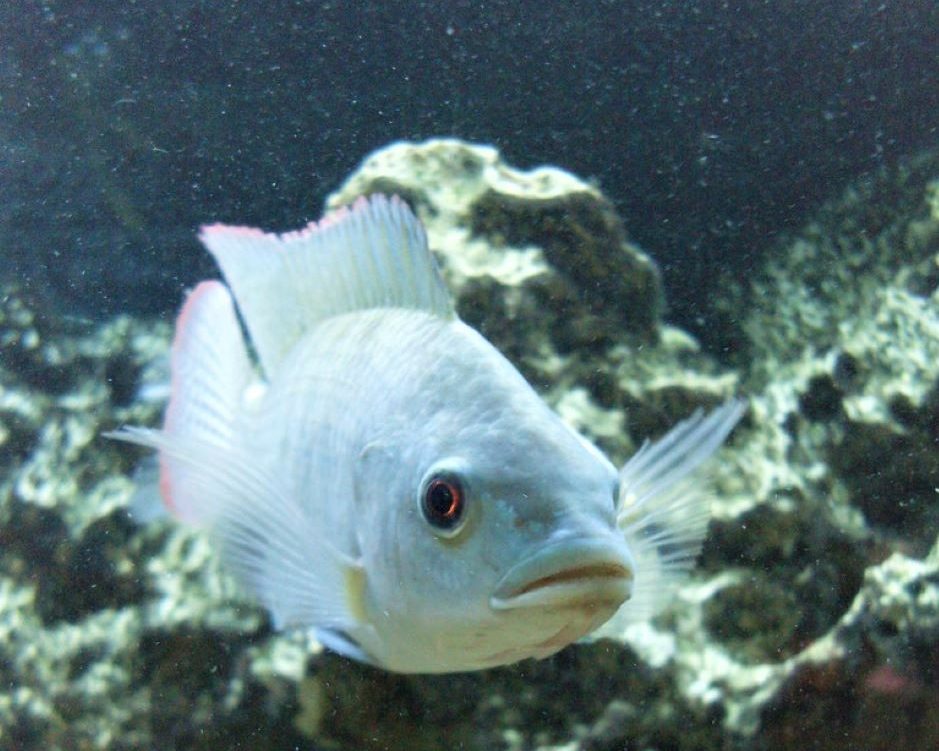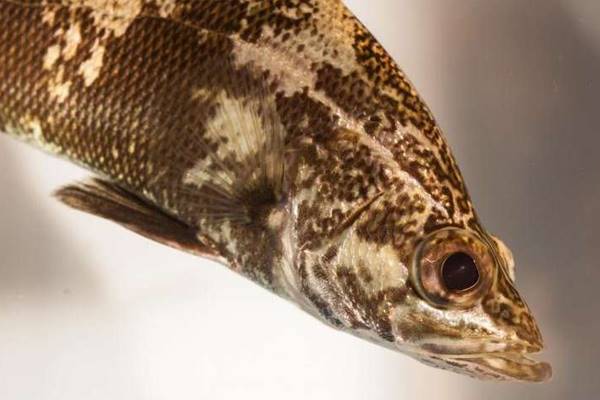African Cichlids And Non-Advantageous Evolutions
 African cichlid (Credit: Dallas Krentzel is licensed under CC BY 2.0)
African cichlid (Credit: Dallas Krentzel is licensed under CC BY 2.0)Though evolutionary changes are largely considered good, their role in nature and a species’ survival can be misleading. As was the case with some African cichlid fish, evolving to have an advantage in consumption — pharyngeal jaws in their throats — ultimately helped rival fish to outcompete them.
Pharyngeal jaws are an extra set of jaws that rest within an animal’s pharynx or throat. In most fish species, including the African cichlid, the pharyngeal jaw is not extendable and instead serves as an additional set of teeth to ease the breakdown of tougher foods. Moray eels are one example of a species with an extendable pharyngeal jaw that is also used as a means of swallowing, making the trait essential for digestion.
The newly evolved traits didn’t immediately yield negative effects for the cichlids. In fact, the strong, chewing jaws they had in their throats let them chow down without discrimination on all sorts of hard-shelled lifeforms in Lake Victoria and Malawi.
Depending on the type of cichlids, more specifically their diet, the fish featured different iterations of integration between their oral and pharyngeal jaws, according to a 2021 study. For example, cichlids that hunt prey typically paired slender, mobile jaws with lean pharyngeal jaws. In contrast, those that relied on alae and vegetation for their diet typically had tough and compact oral jaws with strong pharyngeal jaws.
This advantage helped them thrive for decades in the lakes and diversify into different strains of colorful fish, the descendants of which live in many aquariums today.
How Pharyngeal Jaws Harm Survival Rates of African Cichlids
Scientists with the University of California, Davis, and other schools made the find through a large-scale analysis of changes to the fish’s diets across several generations. The study covered the period during which Nile perch were being introduced en masse by fishermen around Lake Victoria.
According to Columbia University, the Nile perch was introduced into Lake Victoria because it is a popular food source. Nile perch also reproduce quickly, making them a reliable catch, widespread in the waterways in which they live.
The introduction of Nile perch spelled trouble for many fish and other life forms living in the lake. And so, for some time, it had been thought that the Nile perch must’ve eaten up the cichlids in Lake Victoria like they had everything else.
How Nile Perch Overturned Evolutionary Advantages
Thanks to the diet analysis, researchers at UC Davis and elsewhere were able to pinpoint exactly what the perch and cichlids had been chowing down on. As it turned out, regardless of the fact that perch were eating cichlids, the most significant determining factor of extinction was cichlid type: those that also ate fish.
The scientists found that the fish-eating cichlids had mouths that were similar to Nile perch with the major difference being the fused pharyngeal jaws. The fused jaws led the African chichlids to have limitted mouth mobility and thus could only open their mouths half as wide as the Nile perch. As a result, the cichlids would have needed many hours to deal with prey that the Nile perch could swallow in just a few minutes. The cichlids were simply outcompeted.
Their evolved throat jaws, which had helped them in the pre-perch era, turned cichlids into inferior competitors. So the specialization that came about due to an evolutionary adaption meant to allow them to eat a broader range of fish actually led to far less diversification in the end.

A young Nile perch. (Credit: John Uhrig)
Pharyngeal Jaws: Shared Innovation
According to National Geographic, researchers say that cichlids aren’t alone in having evolved pharyngeal jaws–wrasses, damselfish, and flying fish, all feature the same set of secondary teeth.
Scientists have also studied the diets of those fish families to see what kinds of food they specialized in throughout their evolutionary history. The fish were found to be unusually quick to diversify into species that tackle hard-to-eat foods, like tough plants or crunchy animals. Alternatively, they were also unusually slow to produce species that tackle hard-to-catch foods, like other fish.
Other groups were subject to the same trade-off — chewing pharyngeal throat jaws for tough foods or wide mouths for swallowing other fish. A challenging evolutionary adaptation because each has its own advantages. The reality is that, without the invasion of Nile perch, the African cichlid would still be reaping the benefits of their evolution as they developed and optimized for a less-competitive environment.
In the past, researchers had seen the pharyngeal jaws of cichlids as a classic example of evolutionary innovation. That’s still true, but the study also reveals that the evolution wasn’t wholly beneficial.


Pingback: FishSens Magazine | Unexpected Predictions for Asian Carp in Lake Erie - FishSens Magazine